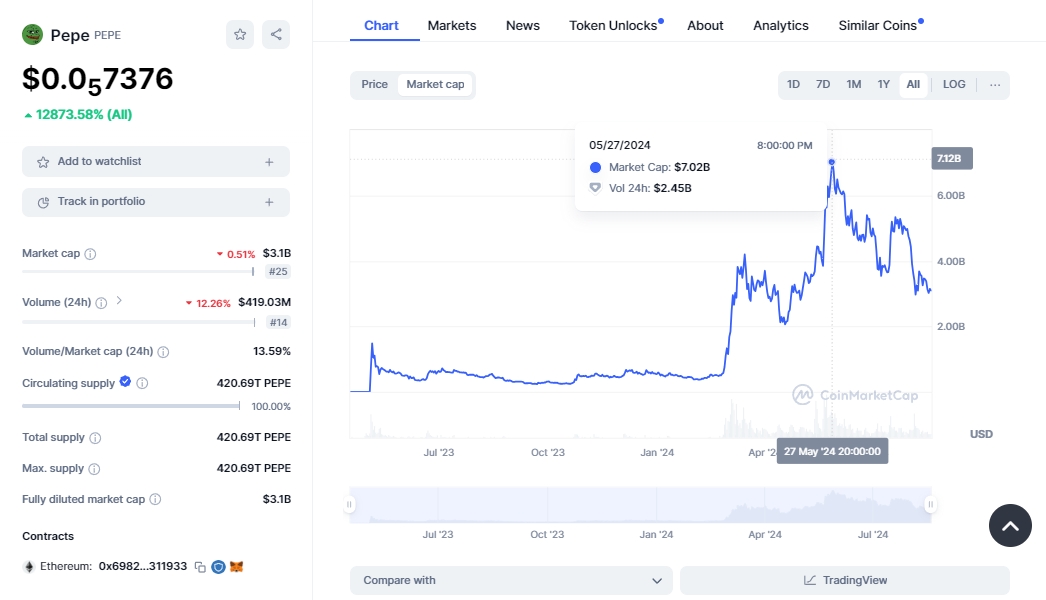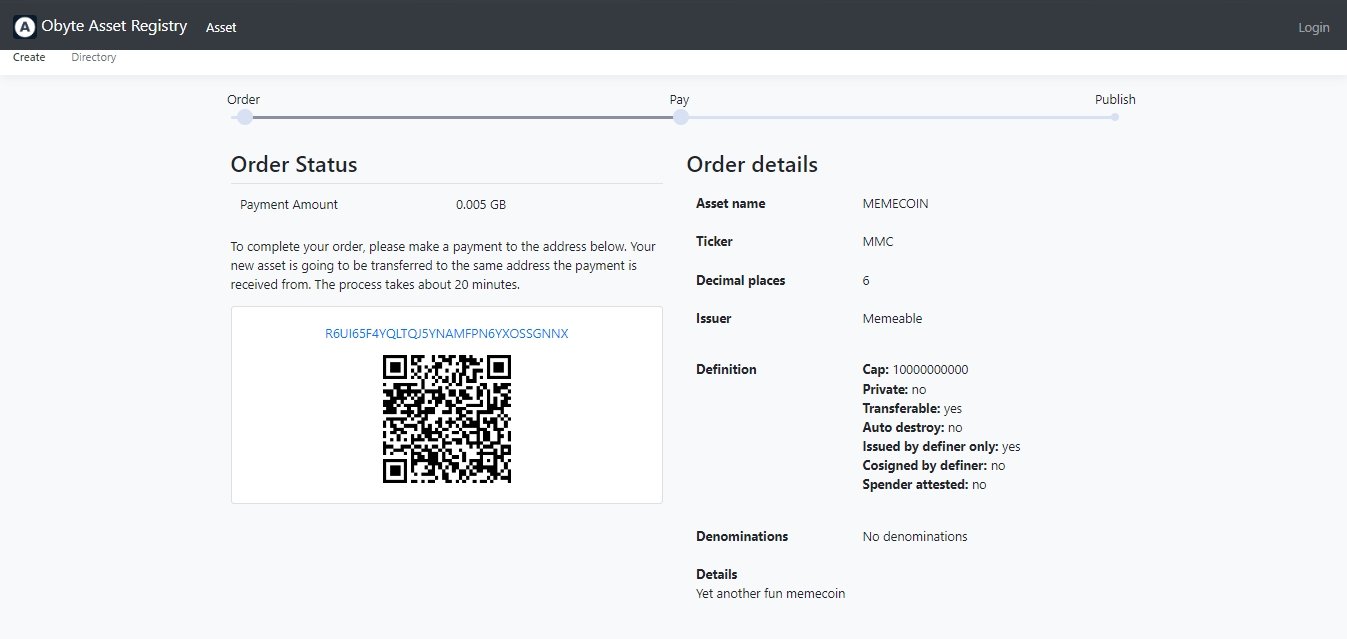and the distribution of digital products.
DM Television
Why your Memecoin Could Get Institutional Investment
One random night in 2013, Jackson Palmer, an Australian marketer who worked at Adobe, was bored. Nobody, not even himself, would have guessed that the idea he had that random night would result in the addition of billions of dollars to the whole cryptocurrency market capitalization. That means there are a lot of people and companies worldwide injecting that money into the market, and all of this because lol, memes. As it turned out, a meme (a memecoin) could be quite profitable.
\ Jackson Palmer, along with the American software engineer Billy Markus, are the creators of the first-ever memecoin in existence: Dogecoin (DOGE). As the name suggests, memecoins are, well, coins based on memes —Internet jokes. To be more specific, they’re cryptocurrencies as much as Bitcoin or Ether, with most of the same features, but their utility is, basically, to make us laugh. And maybe to give some of us some profits along the way.
\ Did you know that anyone can create their own cryptocurrencies, and those new cryptocurrencies could acquire real-world value if they become popular enough? That’s how memecoins get their prices. They can even turn out to be “the next big thing” for investors. And yes, you could even make your own right now. It’s not even that difficult or expensive, depending on the platform, and it could turn out very well if we consider past cases.
A Funny LandscapeMemecoins started with Dogecoin and this one is still the most popular, but they didn’t end there. Shiba Inu (SHIB), the second largest by market cap in this category, appeared in 2020 and some people actually became rich by buying early, at laughable prices. Besides, SHIB brought something new into the memecoin landscape, something that Dogecoin didn’t: Decentralized Finance (DeFi) features. Or the possibility to re-invest your money inside its ecosystem via liquidity mining.
\
\ If you provide liquidity (funds) into one or more of the pools of their Decentralized Exchange (DEX), you can earn tokens in return from the fees paid by other users. This way, you’re not only counting on the main currency (SHIB) rising in price but also getting a predictable income from swap fees. Of course, liquidity mining isn’t limited to memecoins, but the mix with them was so successful for Shiba Inu that others started to copy it with different degrees of success.
\ That’s likely how we have now over 2,694 memecoins swarming the crypto space, with a total market cap of over $37.1 billion to date [CMC]. Apart from Dogecoin and Shiba, among the most popular ones we have Pepe (PEPE), dogwifhat (WIF), Bonk (BONK), Floki (FLOKI), Brett (BRETT), Popcat (POPCAT), Mog Coin (MOG), and Cat in a Dog’s World (MEW). Funny enough, there’s also a memecoin called Memecoin (MEME). All of them may offer unique features… or not.
Challenges vs. GrowthNot gonna lie here, memecoins are a risky investment if you decide to try them. They depend on how fun and popular they become, and yes, some may offer interesting features like liquidity mining or even a Metaverse, but others are just… there. Case in point, Pepe (PEPE), the third one by market cap in the sector, doesn’t have a clear utility or plans beyond being a communal joke. They even said this on their webpage:
\
“$PEPE is a meme coin with no intrinsic value or expectation of financial return. There is no formal team or roadmap. The coin is completely useless and for entertainment purposes only.”
\ One would believe that would deter people from buying, but PEPE launched on Ethereum in April 2023 and became widely popular by May. Its price skyrocketed by over 7,000% within just one month, and its market capitalization reached a peak of over $7 billion in the same period. As of now, it boasts a market cap of $3.1 billion, it’s available on major exchanges, and even some companies are investing in it. Hey, people like a good meme.
\

Despite their intrinsic challenges, like volatile prices, lack of real utility, credibility, and even security risks in some cases, this is the wild free market, and anyone can buy for fun or future profits without any requirement at all —beyond the Internet and a wallet. At least for now, because regulators worldwide are quite busy with stablecoins instead, not paying much attention to memecoins.
\ If we follow previous figures, we can see that the whole market cap of memecoins has grown by over 402% since March 2021 [CMC], and they keep coming. That’s quite a good sign against all odds.
Institutional InvestmentIn the meantime, successful memecoins have active and passionate communities that foster a sense of belonging among holders. Community engagement via social media buzz, viral marketing, and grassroots movements must be there to drive adoption —that’s the gist of memecoins. They need an active community to thrive, and the more active, the better.
\ Even institutions have been attracted to these profitable financial jokes. A report from Bybit, titled "Beyond the Hype: The Realities of Institutional Memecoin Investments," highlighted a significant rise in institutional interest in memecoins. Between February and March 2024, institutional holdings in these assets soared by 226% to $204 million, peaking at $293.7 million in April before dropping to $139 million due to market volatility. But actual companies are buying memecoins as investments, and who would have thought?
\
The report notes that institutions eagerly joined the memecoin trend as it peaked in late March, reflecting a strategic approach to capitalize on their popularity. Despite selling off some holdings, they still hold substantial memecoin investments, anticipating future market improvements.
\ Some companies are buying things like DOGE, PEPE, and SHIBA, that’s a fact. And not only a few cents but likely millions. If those tokens made it just by being viral, why can’t that happen to your own memecoin as well? Perhaps it’s worth a shot. If you don’t get rich, at least you’ll have some inexpensive fun —but not on all platforms.
\
Creating your own memecoinCreating a memecoin often starts with leveraging an existing ledger, but not all chains offer the same advantages. Networks like Ethereum, while popular, can be prohibitively expensive with high transaction fees that often can reach two figures in USD. For those with limited resources or unwilling to waste their resources, this isn’t ideal. On top of that, launching a token on Ethereum often requires programming knowledge or hiring a developer, which can cost thousands of dollars. This can turn a fun project into a costly endeavor.
\ With Obyte, creating your own memecoin isn’t only more affordable but also easier, even for beginners. The Asset Registry on Obyte’s platform allows you to craft customized tokens, including memecoins, without needing to write any code. You simply fill in basic details, such as the name and supply, and pay a tiny fee of less than $1 in GBYTE. The decentralized nature of Obyte’s DAG system adds another layer of appeal, as it helps ensure that your memecoin is less prone to censorship and operates in a highly decentralized environment.
\
\ Now, beyond creation, you’ll need to focus on heavy promotion. A memecoin needs its own website and social channels with tons of memes to build its own strong community. You’ll be selling an idea, a funny one at that, so that’s work to do. You could also offer incentives for holding and using the coin, and collaborate with influencers to increase visibility and attract more users.
\ Success is never secured. But the code is there, available for everyone to use, and you’ll never know if you don’t try it. Just like previous creators, have some fun!
\
Featured Vector Image by Freepik
- Home
- About Us
- Write For Us / Submit Content
- Advertising And Affiliates
- Feeds And Syndication
- Contact Us
- Login
- Privacy
All Rights Reserved. Copyright , Central Coast Communications, Inc.


